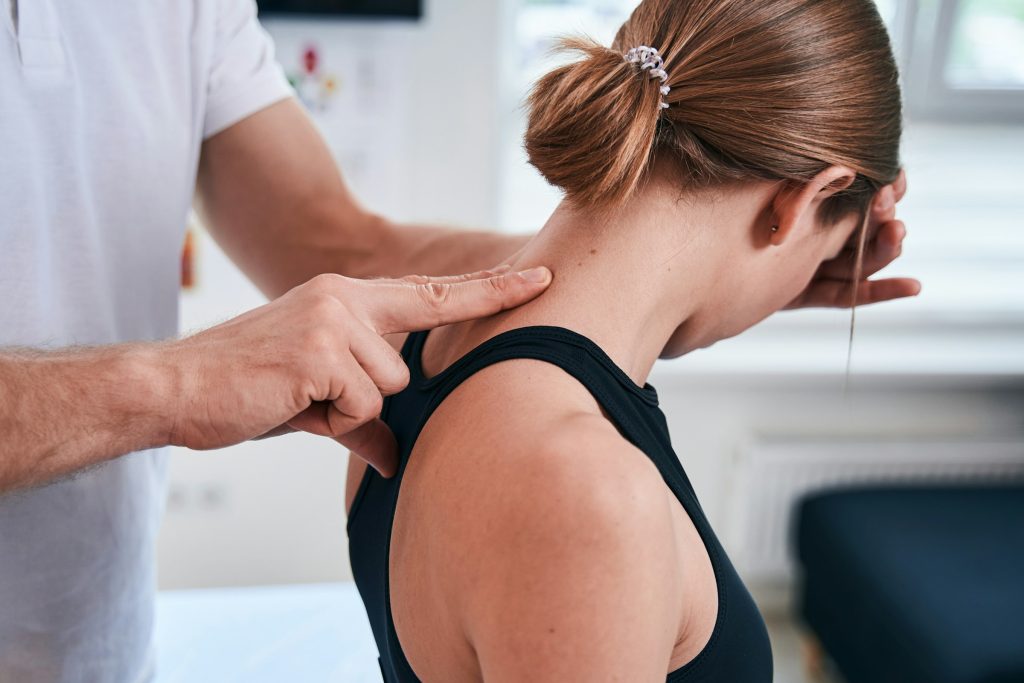Arthritis, a condition characterised by joint inflammation, affects millions of Australians, significantly impacting their quality of life. While medical treatments are crucial in managing arthritis, lifestyle changes can substantially affect pain management and overall well-being. This article explores various lifestyle modifications that can help individuals with arthritis pain lead more comfortable and active lives.

Understanding Arthritis
Before delving into lifestyle changes, it’s essential to understand what arthritis is and how it affects the body. Arthritis is not a single disease but an umbrella term for joint pain or joint disease. There are over 100 different types of arthritis, but the two most common forms are osteoarthritis and rheumatoid arthritis.
Osteoarthritis is a degenerative joint disease that occurs when the cartilage that cushions the ends of bones wears away. It’s often called “wear and tear” arthritis and is most common in older adults.
Rheumatoid arthritis, on the other hand, is an autoimmune disorder where the body’s immune system attacks the joints, causing inflammation and pain.
Prevalence in Australia
According to the Australian Institute of Health and Welfare, about 3.6 million Australians, or 15% of the population, had arthritis in 2017-18. More recent estimates from the Global Burden of Disease Study 2019 suggest that osteoarthritis, the most common form of arthritis, affected approximately 3.20 million Australians in 2019. The prevalence of osteoarthritis has shown substantial growth, with increases of 171% for hip osteoarthritis, 126% for knee osteoarthritis, and 110% for hand osteoarthritis between 1990 and 2019.
Common Symptoms and Challenges
Arthritis symptoms can vary depending on the type but generally include:
- Joint pain and stiffness
- Decreased range of motion
- Swelling in the affected joints
- Fatigue
- Difficulty performing daily activities
These symptoms can significantly impact a person’s quality of life, making it challenging to work, engage in hobbies, or even perform simple tasks like opening a jar or climbing stairs.
Exercise and Physical Activity
One of the most effective lifestyle changes for managing arthritis pain is regular exercise. While it may seem counterintuitive to move more when in pain, physical activity can help reduce pain, improve flexibility, and strengthen the muscles that support your joints.
Benefits of Regular Exercise for Arthritis Sufferers
- Strengthens muscles around the joints
- Helps maintain bone strength
- Improves balance and reduces the risk of falls
- Enhances sleep quality
- Helps control weight, reducing stress on joints
- Improves overall mood and mental health
Low-impact Exercises Suitable for Arthritis Patients
- Swimming and water aerobics: The buoyancy of water reduces stress on weight-bearing joints.
- Walking: A low-impact activity that can be done almost anywhere.
- Cycling: Either outdoors or on a stationary bike, cycling is easy on the joints.
- Tai Chi: This gentle, flowing exercise improves balance and flexibility.
- Yoga: Helps improve flexibility and strength while also promoting relaxation.
Tips for Starting an Exercise Routine Safely
- Start slowly and gradually increase intensity and duration
- Always warm up before exercising and cool down afterwards
- Listen to your body, and don’t push through pain
- Consider working with a physiotherapist to develop a safe, effective routine
Nutrition and Diet
What you eat can have a significant impact on arthritis symptoms. A balanced diet can help manage inflammation, maintain a healthy weight, and provide the nutrients needed for joint health.
Anti-inflammatory Foods and Their Benefits
Several foods have anti-inflammatory properties that may help reduce arthritis pain:
- Fatty fish (salmon, sardines, mackerel): Rich in omega-3 fatty acids
- Colourful fruits and vegetables: High in antioxidants
- Nuts and seeds: Contain healthy fats and vitamin E
- Olive oil: Contains oleocanthal, which has properties similar to non-steroidal anti-inflammatory drugs
- Green tea: Rich in polyphenols, particularly a compound called epigallocatechin 3-gallate (EGCG)
Foods to Avoid or Limit
Some foods may increase inflammation and should be consumed in moderation:
- Processed foods
- Red meat
- Sugary drinks and snacks
- Alcohol
- Foods high in saturated and trans fats
The Importance of Maintaining a Healthy Weight
Excess weight stresses weight-bearing joints, particularly the knees, hips, and feet. Losing even a small amount of weight can significantly reduce the stress on these joints. According to the Arthritis Foundation, every pound of weight loss can reduce the load on the knee joint by 4 pounds.
Stress Management and Mental Health
Chronic pain can take a toll on mental health, and conversely, stress and anxiety can exacerbate arthritis symptoms. Managing stress is crucial for overall well-being and pain management.
The Connection Between Stress and Arthritis Pain
Stress triggers the release of chemicals in the body that can increase inflammation and pain sensitivity. Additionally, stress can lead to poor sleep, which can further exacerbate pain.
Mindfulness and Relaxation Techniques
- Meditation: Regular meditation practice can help reduce stress and improve pain management.
- Deep breathing exercises: Simple yet effective for reducing stress and promoting relaxation.
- Progressive muscle relaxation: This technique involves tensing and then relaxing different muscle groups in the body.
- Guided imagery: Using mental images to promote relaxation and reduce stress.
The Role of Sleep in Pain Management
Quality sleep is crucial for managing arthritis pain. Poor sleep can increase pain sensitivity and fatigue. Aim for 7-9 hours of sleep per night and establish a regular sleep routine. Consider these tips:
- Stick to a consistent sleep schedule
- Create a relaxing bedtime routine.
- Ensure your bedroom is dark, quiet, and cool.
- Avoid screens for at least an hour before bed.
Complementary Therapies
While lifestyle changes form the foundation of arthritis management, some complementary therapies may offer additional relief. It’s important to note that these should be used in conjunction with, not as a replacement for, conventional medical treatments.
Acupuncture and Massage
- Acupuncture: This traditional Chinese medicine technique involves inserting thin needles into specific points on the body. Some studies suggest it may help reduce arthritis pain.
- Massage: Regular massage can help reduce joint pain and stiffness, improve range of motion, and promote relaxation.
Heat and Cold Therapy
- Heat therapy: Applying heat to stiff joints and tired muscles can help reduce pain and relax the tissues.
- Cold therapy: Applying cold packs to swollen joints can help reduce inflammation and numb pain.
Herbal Supplements
Some herbal supplements have shown promise in managing arthritis symptoms. However, it’s crucial to approach these with caution and always consult with a healthcare professional before starting any new supplement regimen.
Note: The Therapeutic Goods Administration (TGA) regulates complementary medicines in Australia. Always choose products that are TGA-approved and consult with a healthcare professional before starting any new supplement.
Home and Workplace Modifications
Making changes to your home and workplace environment can significantly improve comfort and reduce strain on your joints.
Ergonomic Adjustments
- Adjust your desk, chair, and computer setup to maintain good posture.
- Use a headset or speakerphone to avoid neck strain during long calls.
- Position frequently used items within easy reach to avoid overreaching
Assistive Devices and Tools
- Jar openers and easy-grip utensils for the kitchen
- Long-handled shoehorns and dressing aids
- Raised toilet seats and shower chairs for the bathroom
Creating an Arthritis-Friendly Environment
- Install grab bars in the bathroom.
- Use lever-style door handles instead of round knobs.
- Consider a higher bed or chair to make it easier to stand up
Building a Support Network
Living with arthritis can be challenging, but you don’t have to face it alone. Building a strong support network is crucial for practical and emotional assistance.
Importance of Social Connections
Maintaining social connections can help combat feelings of isolation and depression that often accompany chronic conditions. Stay engaged with friends and family, and consider joining community activities or clubs that align with your interests and abilities.
Working with Healthcare Professionals
A team approach to arthritis management often yields the best results. This team may include:
- General practitioner
- Rheumatologist
- Physiotherapist
- Occupational therapist
- Dietitian
- Psychologist or counsellor
Regular check-ins with your healthcare team can help you monitor your condition and adjust your management plan as needed.
Joining Support Groups and Communities
Connecting with others who have arthritis can provide valuable emotional support and practical advice. Consider joining:
- Local arthritis support groups
- Online forums and communities
- Arthritis-specific exercise classes
Conclusion
Managing arthritis is a multifaceted approach that goes beyond medication. By implementing these lifestyle changes – regular exercise, a healthy diet, stress management, and creating supportive environments – you can take control of your arthritis and improve your quality of life.
Remember, everyone’s experience with arthritis is unique, and what works for one person may not work for another. Be patient with yourself as you explore different strategies, and don’t hesitate to seek support from healthcare professionals and your community.
Living with arthritis presents challenges, but it’s possible to lead an active, fulfilling life with the right approach. By making these lifestyle changes, you’re not just managing symptoms but taking proactive steps towards overall health and well-being.
Frequently Asked Questions:
Are complementary therapies like acupuncture safe for arthritis?
Many people find complementary therapies helpful in managing arthritis symptoms. However, it’s crucial to approach these therapies with caution and always inform your healthcare provider. Some therapies, like acupuncture, have shown promise in reducing pain for some individuals.
However, the effectiveness can vary, and these therapies should be used in conjunction with, not as a replacement for, conventional medical treatments.
How does stress affect arthritis, and what can I do about it?
Stress can exacerbate arthritis symptoms by increasing inflammation in the body and tensing muscles, which can lead to more pain. Managing stress through techniques like meditation, deep breathing exercises, or engaging in enjoyable activities can help reduce its impact on your arthritis.
If you’re struggling with stress, consider speaking with a mental health professional for additional support.
Is it safe to exercise with arthritis?
Yes, exercise is generally safe and beneficial for people with arthritis. In fact, regular physical activity can help reduce pain, improve flexibility, and strengthen the muscles that support your joints. However, it’s important to start slowly and choose low-impact activities.
Always consult with your healthcare provider or a physiotherapist before starting a new exercise program to ensure it’s appropriate for your specific condition.


